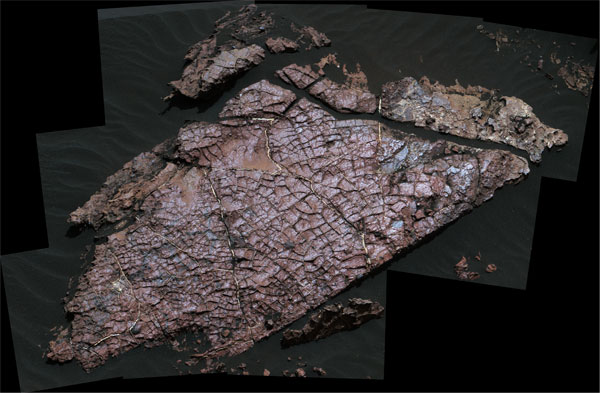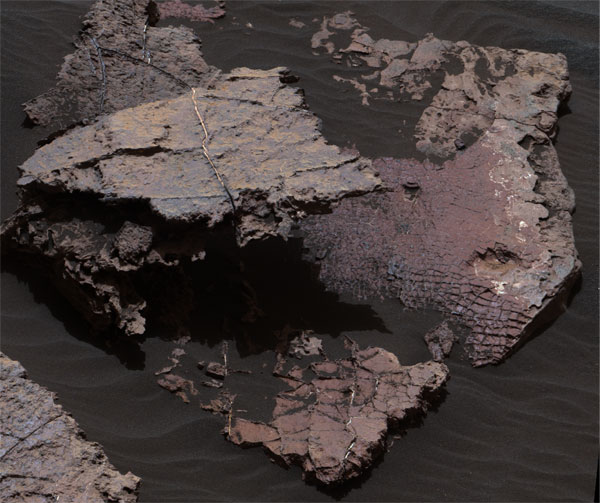Curiosity spotted polygonal shapes on the surface of rocks on Mars — now, analysis of these mud cracks is revealing the history of the long-ago lake that once filled Gale Crater.
Scientists examining Curiosity rover’s findings on Mars have confirmed that desiccation cracks in the Gale Crater indicate fluctuations in the water level of a lake that was present there about 3.5 billion years ago.

NASA / JPL-Caltech / MSSS
Curiosity landed on the northern side of the crater in 2012 and has slowly been making its way south. Close to the crater’s center, it took pictures of a slab of rock nicknamed Old Soaker. Cracks in the rock’s surface have a polygonal shape that look like wet sediment that dried out.
“As sediment near the surface dries, it contracts,” explains lead author Nathaniel Stein (Caltech). The layer underneath, however, retains its wetness longer, and its larger volume pushes on the layer above. “That strain builds until it is relieved by cracks that spread and eventually join to build a polygonal network.”
The cracks themselves are filled with sediment whose chemical composition matches that of the rock itself. Most likely, the cracks were filled in shortly after they were formed as the lake level rose again. Sediment suspended in the water would have slowly settled into the cracks. Stein and colleagues' analysis appears in Geology.
The rover is discovering the history of water on Mars as it makes its way up the Murray Formation — a mountainous region in the crater’s center. Curiosity’s images show banded layers, where cracked rock often covers solid sediment. “This only makes sense geometrically if the stuff on top is younger,” says Stein. Lake levels would have had to rise and fall throughout Martian history: “These cycles of rise and fall likely happened many times before the region finally dried out for good.”

NASA / JPL-Caltech / MSSS
So, what caused water to finally disappear from Mars? “We don’t know exactly what happened to all that water,” Stein says. Possible explanations include Mars’s loss of magnetic field, which might have enabled solar winds to sweep up water and atmosphere alike, carrying them off the planet. Whatever the scenario, further findings from Curiosity will help scientist develop a fuller picture of the history of water on Mars.
 0
0









Comments
You must be logged in to post a comment.